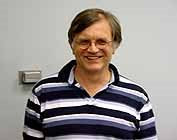I'll Never Shot Put Again
In my household this week, a tragic accident at the U. S. Track and Field Championships overshadowed everything that happened at the NBA finals, the U. S. Open, or Wimbledon. An official named Paul Suzuki was killed when a shot put hit him in the head during a practice session. Suzuki, 77, had been been retired for some time and officiated regularly at many track meets. He was immediately knocked unconscious and died at the hospital later.I was very glad to see that the man or woman who through the errant shot was not named. It would not have been fair at all. Hitting somebody with a shot put, discus, javelin, or hammer is every thrower's nightmare. A shot put is an eight (for high school women), twelve (for high school men and adult women), or sixteen pound (for adult men) metal ball and shot-putters always face backwards when they go start their throwing motion. When they turn around to prepare themselves to throw, they can't see what's out in the field they're throwing to. Most shot-putters then go through a very tight little spinning motion and release the shot as they are coming out of the spin. Once they start spinning, they can't see anything in the blur of their motion. The shot putter in question wouldn't have known where Paul Suzuki was standing or exactly where the shot put was headed as they looked up from their release. He or she would not have known there was a problem until it was way too late.Shot-putting has a powerful, tightly wound beauty to it. Brian Oldfield, the first shot-putter to use a discus spin, described shot-putting as "punching holes in the air." But it's more than that. Even the shot-putter's initial self-gathering as the shot-putter is shrugging at the back of the ring is exhilarating because it's a simultaneous relaxation and coiling, a little exercise in defying dichotomy. Likewise, a shot-putter's spin is so tight, so self-focused, and so quick that shot-putters live in a little, blurred moment apart from the rest of the world as they move across the ring. This moment of almost complete narcissistic self-involvement culminates in a shot-putter's explosion into the ball as they put all their human force into sending the shot up and out. Gathering their entire human being narcissistically into themselves, they then give everything they are to the throw. Every moment of it is beautiful. Every moment is addicting.I know. I threw the shot for five years during high school and college. I was addicted the whole time. After I was asked to concentrate on the shot as a high school sophomore, it became my number one sport. I threw two or more hours every day for four summers in my back yard and worked at lifting and throwing 2 hours a day all year in college. I loved every thing about the shot. I loved carrying a 12 or 16 pound ball lightly as though it were a grape fruit. I loved the solitude and narcissism of practicing. I loved that I could measure my success after every throw and became an expert at eye-balling short distances. I even owned my own shots. I loved beating bigger, stronger guys. As a high school shot-putter, I was 5' 8" and weighed 170 at most and I beat a lot of guys who were a lot bigger than me. Of course, I was too small to be championship caliber on any level. It especially hurt that I didn't have big thighs. You don't have to be really tall or heavy to be a top shot-putter. You can be 6' or 6'2 and 240 and be a great shot-putter like Jeff Nelson or Al Feuerbach, but you need to have powerful legs to really explode into the ball and I just didn't have the leg weight to make up for being small. Eventually, I gave it up when I was in college. Although I grew to 5'10 and bulked up to 190, I wasn't really competitive with the more athletic big guys who threw the shot in college. So, I gave up throwing, gave up lifting weights, lost forty pounds and started to get obsessed with my eventual field of political philosophy. Adolescent obsessions gave way to adult obsessions. Such is life. But I paid the price. A couple months after I stopped working out full time, I started to get anxiety attacks. It turned out that working out so heavily helped me stabilize an enormous amount of fear and anger from my childhood in an abusive family. Eventually, I would be forced to face the whole psychological mess directly.I've still been known to shot put vegetables and fruits to the compost bin every once in a while now that I'm 51, demonstrating the fine points to my daughters. But now I wonder. I know that the nightmare that goes with every throw of every practice and every meet happened to somebody else. It seems like that would give a dimension of sadness to throwing. I doubt it will ever be the same. Maybe I'll just toss the fruits and vegetables underhand.


0 Comments:
Post a Comment
<< Home